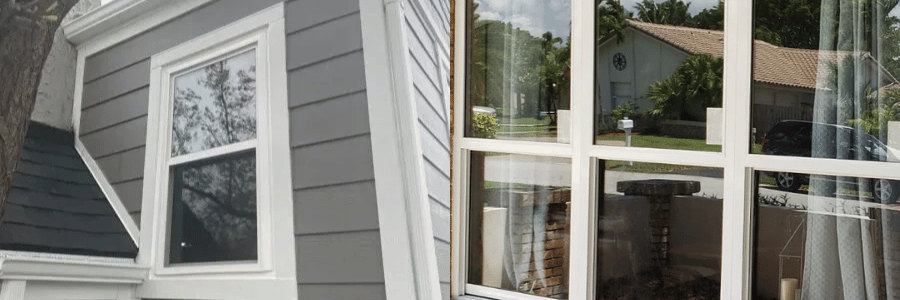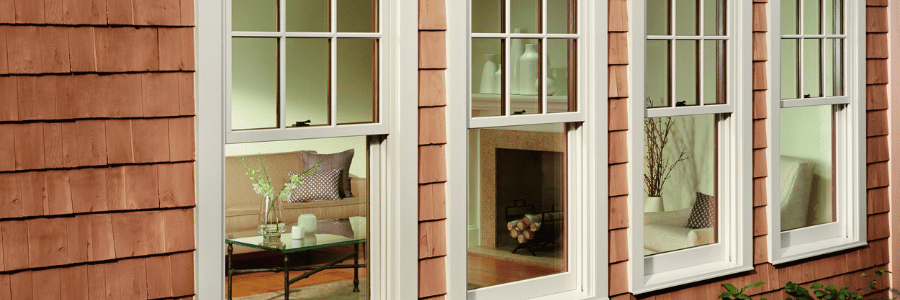When it comes to choosing the perfect windows for your home, style, functionality, and budget all play crucial roles in the decision-making process. Among the most popular window styles are single hung and double hung windows. These two options are often confused due to their similar names and appearance, but they offer distinct features that can impact the comfort, energy efficiency, and aesthetics of your home. Learn more as we break down the key differences between single hung and double hung windows to help you determine which style best suits your needs.
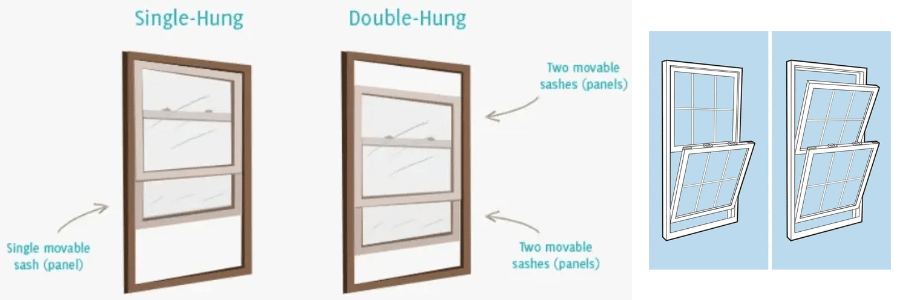
What Are Single Hung Windows?
A single hung window features two sashes—the upper sash, which is fixed in place, and the lower sash, which is operable. The lower sash can be raised and lowered to open the window, allowing for ventilation. However, the upper sash remains stationary and cannot be moved.
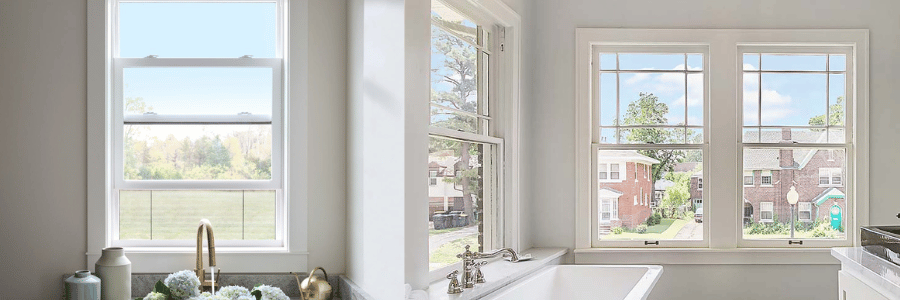
Pros of Single Hung Windows:
- Cost-Effective: Single hung windows are typically less expensive than double hung windows, making them a great option for homeowners on a budget.
- Simplicity: With fewer moving parts, single hung windows are easier to maintain and clean. The design is straightforward, making them a popular choice for homes with traditional or classic architectural styles.
- Energy Efficiency: Because only one sash is operable, single hung windows tend to have fewer air leaks, which can contribute to better insulation and energy efficiency.
Cons of Single Hung Windows:
- Limited Ventilation: Since only the lower sash moves, you may have less control over airflow. The upper sash remains sealed, which can reduce ventilation options.
- Difficult to Clean: Cleaning the exterior of the upper sash can be tricky since it can’t be moved. Homeowners with single hung windows often need to use a ladder or hire professional cleaning services.
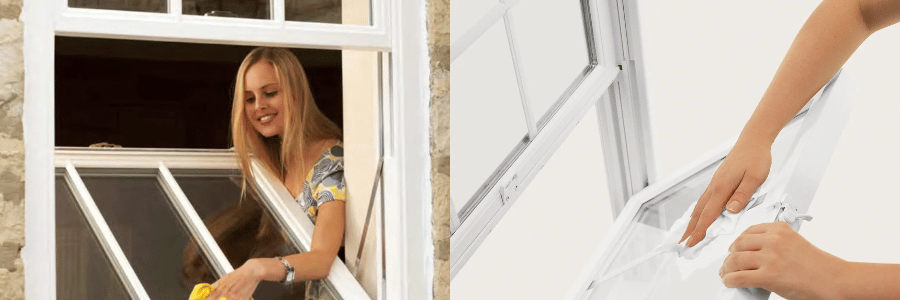
What Are Double Hung Windows?
A double hung window also has two sashes, but unlike single hung windows, both the upper and lower sashes are operable. This means that both sashes can be opened vertically, allowing for enhanced control over airflow. In addition, both sashes can be tilted inward for easy cleaning, making maintenance more convenient.
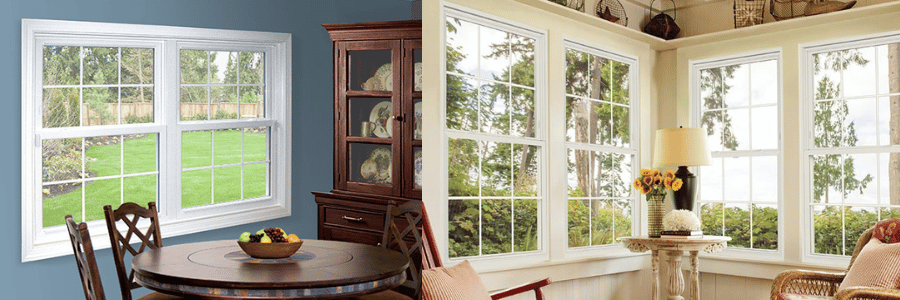
Pros of Double Hung Windows:
- Superior Ventilation: The ability to open both the top and bottom sashes allows for better airflow and ventilation, which can be particularly beneficial for homes in warmer climates.
- Easier Cleaning: Double hung windows are easier to clean both inside and out, as both sashes can tilt inward. This feature is especially useful for multi-story homes or windows located in hard-to-reach areas.
- Versatility in Design: Double hung windows are often seen as a more flexible option for various home styles, offering both traditional and contemporary looks. They can be used in both modern and historic homes and provide an elegant balance of form and function.
Cons of Double Hung Windows:
- Higher Cost: Double hung windows tend to be more expensive than single hung windows, both in terms of initial purchase and installation.
- More Complex Maintenance: While cleaning is easier, double hung windows have more moving parts, which means more potential for mechanical issues or maintenance needs over time.
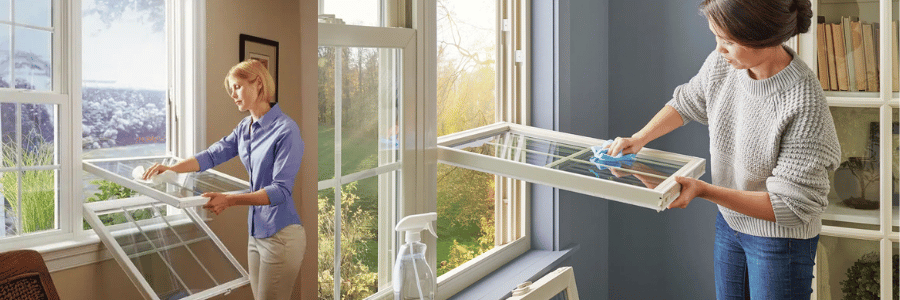
Key Differences at a Glance:
| Feature | Single Hung Windows | Double Hung Windows |
|---|---|---|
| Operable Sashes | One (lower sash only) | Two (upper and lower sashes) |
| Ventilation | Limited (only lower sash opens) | Superior (both sashes open for airflow) |
| Maintenance | Simpler (fixed upper sash) | Easier to clean (both sashes tilt in) |
| Cost | More affordable | Typically more expensive |
| Energy Efficiency | Generally more energy-efficient | May have more air leaks due to added moving parts |
| Aesthetic Appeal | Classic, simple design | Versatile, can fit a range of architectural styles |
Which One is Right for Your Home?
The decision between single hung and double hung windows largely depends on your personal preferences, budget, and the specific needs of your home. Here are a few questions to consider that may help guide your decision:
- Do you need more ventilation? If airflow is a top priority, double hung windows are the clear winner, offering the ability to open both the top and bottom sashes.
- What’s your budget? If you’re looking for an affordable option, single hung windows may be a more budget-friendly choice, offering similar looks and function without the higher cost.
- How important is window maintenance? If you want windows that are easy to clean and maintain, double hung windows may be the better option due to their tilt-in feature. However, if you prefer simplicity and don’t mind occasional cleaning challenges, single hung windows can still be a great choice.
- What is your home’s architectural style? Both single and double hung windows are versatile, but double hung windows tend to work well in a broader range of architectural styles, from historic homes to modern designs.
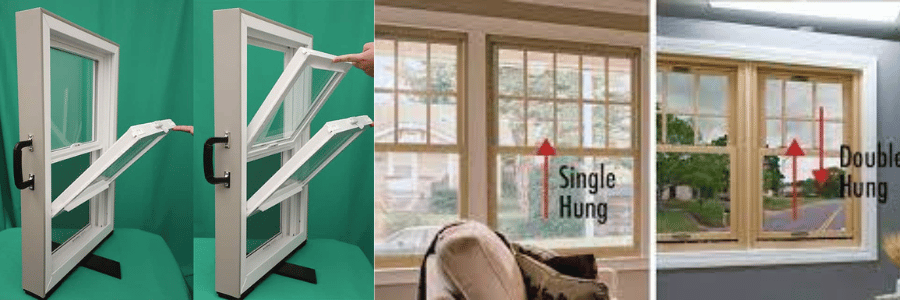
Final Thoughts
Both single hung and double hung windows offer distinct advantages, so the decision ultimately depends on your specific needs, preferences, and budget. If you’re after a more cost-effective, low-maintenance window with a classic look, single hung windows could be a perfect fit. However, if you prioritize versatility, improved ventilation, and ease of cleaning, double hung windows might be worth the investment. Either way, both styles provide durability, energy efficiency, and aesthetic appeal for your home.
Before making your final decision, it’s a good idea to consult with a professional window installer who can assess your home’s unique needs and help you choose the best option for your space.

